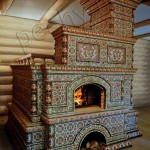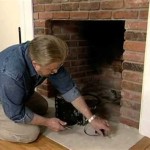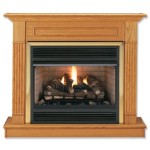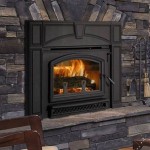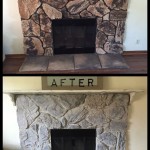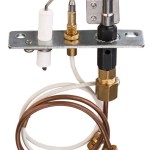Converting to a Gas Fireplace: A Comprehensive Guide
The allure of a crackling fire is undeniable. For those seeking the ambiance and warmth of a fireplace without the hassle of chopping wood and cleaning ash, a gas fireplace offers a compelling solution. Converting an existing fireplace to gas can be an attractive option, providing a modern upgrade with enhanced convenience and efficiency. This article outlines the process, benefits, and considerations involved in converting to a gas fireplace.
Understanding the Conversion Process
Converting a fireplace to gas entails replacing the existing firebox and hearth with a gas-burning system. This involves installing a gas line, a gas log set or burner, and a vent system for proper combustion and ventilation. The process can be complex, requiring the expertise of a qualified and licensed gas fireplace installer.
Here's a general outline of the steps involved:
- Consultation and Planning: Begin by consulting with a professional gas fireplace installer to discuss your specific needs and requirements. They will assess your existing fireplace, evaluate the necessary modifications, and provide a detailed estimate for the conversion.
- Gas Line Installation: If no existing gas line is present, a new one will need to be installed. This involves connecting to the main gas line and running the pipe to the fireplace location. The installer will ensure the line is properly sized and meets safety regulations.
- Firebox and Vent System Installation: The existing firebox will be removed and replaced with a gas-burning firebox. A vent system, either direct vent or vent-free, will be installed to ensure safe and efficient combustion.
- Gas Log Set or Burner Installation: The gas log set or burner will be installed inside the firebox. These come in various styles, from realistic-looking gas logs to contemporary burner designs.
- Testing and Inspection: Once the installation is complete, the installer will test the system for proper operation and ensure it meets all safety standards.
Benefits of Converting to a Gas Fireplace
Converting a fireplace to gas offers numerous advantages over a traditional wood-burning fireplace:
Convenience and Efficiency
Gas fireplaces are incredibly convenient, eliminating the need for chopping, storing, and hauling firewood. With a simple switch flip, you can enjoy a warm and inviting fire. Gas fireplaces also offer greater efficiency than wood-burning fireplaces, converting a higher percentage of fuel into heat, resulting in lower energy consumption and reduced heating costs.
Cleanliness and Reduced Maintenance
Gas fireplaces produce minimal smoke and ash, making them significantly cleaner than their wood-burning counterparts. They require minimal maintenance, mainly consisting of occasional cleaning of the glass and burner.
Enhanced Safety
Gas fireplaces are generally considered safer than wood-burning fireplaces, with reduced risks of fire hazards and carbon monoxide buildup. However, proper installation and regular maintenance are crucial to ensuring safety.
Considerations Before Converting to a Gas Fireplace
While converting to a gas fireplace offers undeniable benefits, there are several crucial factors to consider before undertaking the project:
Cost
Converting a fireplace to gas can be a significant investment, ranging from a few thousand to tens of thousands of dollars depending on the scope of the project, local labor costs, and the chosen fireplace system.
Gas Line Availability
Ensure that a gas line is readily available or can be installed to the fireplace location. The costs involved in installing a gas line can vary depending on the distance and complexity of the installation.
Venting Requirements
Gas fireplaces require proper ventilation to ensure safe and efficient operation. Direct vent systems require an exterior vent, while vent-free fireplaces vent combustion gases through the room. Understanding your home's layout and available venting options is essential.
Local Building Codes
Verify that your local building codes permit the installation of gas fireplaces and that the proposed system meets all applicable standards.
Conclusion
Converting an existing fireplace to gas can be a worthwhile investment, offering convenience, efficiency, cleanliness, and enhanced safety. However, thorough planning and careful consideration of factors like cost, gas line availability, venting requirements, and local building codes are crucial before undertaking the project. Consulting with a qualified and experienced gas fireplace installer is recommended for a successful and safe conversion.
Converting A Wood Burning Fireplace Into Gas Heat Glo

Wood To Gas Fireplace Conversion In Wisconsin Free Quote Badgerland Waesha

Convert From Wood To Gas With A Insert The Kernel Burner

Wood Fireplaces Gas Conversion That Counts
Can I Convert My Wood Burning Fireplace To Gas Woodlanddirect Com

Wood Burner Conversion New Jersey Fireplaces Kjb

Gas To Wood Fireplace Conversion Overland Park Ks Firplace Service

Convert To Gas Installing Fireplace Inserts Doctor Flue
Can I Convert My Wood Burning Fireplace To Gas Woodlanddirect Com

Want To Convert Gas Wood Fireplace Full Service Chimney
Related Posts

